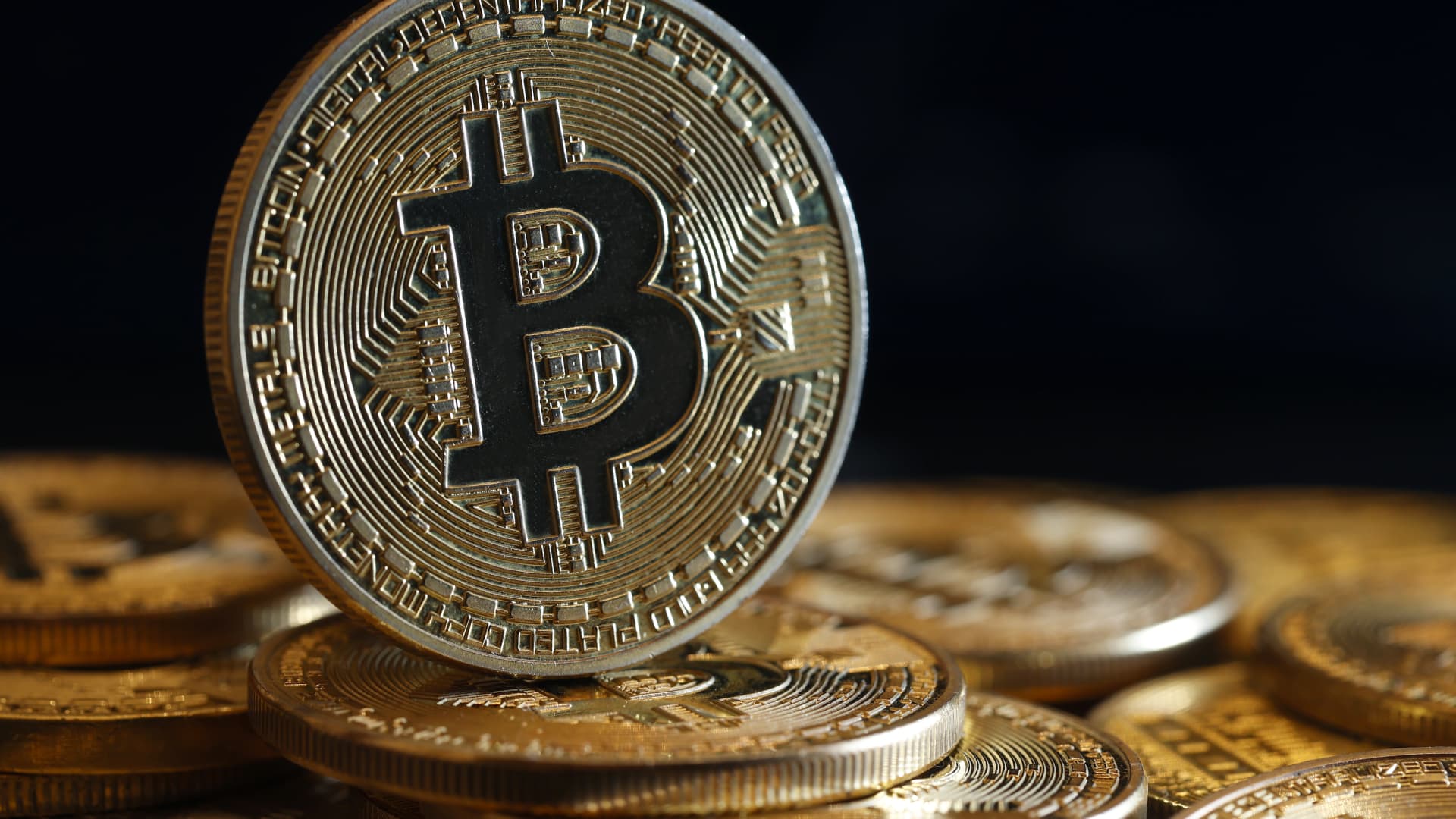Bitcoin’s “halving” is expected to happen soon. But its potential impact depends on your relationship to the coin; it’s likely to affect miners and investors differently.
“To the people who own bitcoin because they think it’s a good store of value, this halving is not that big of a deal. But to the miners, it’s a huge deal,” Omid Malekan, an adjunct professor at Columbia Business School and author of “Re-Architecting Trust: The Curse of History and the Crypto Cure for Money, Markets, and Platforms,” tells CNBC Make It.
Miners receive bitcoins, known as block rewards, for verifying and validating transactions and helping keep the blockchain network secure. The miners who receive them can then hold, trade or sell them. This is also how new digital coins enter into circulation.
Since there will only ever be 21 million bitcoin, the halving is a technical event written into bitcoin’s code that splits the block reward miners receive in half every four years. In 2009, miners were rewarded 50 bitcoin. In 2012, they were rewarded 25 bitcoin, in 2016, they received 12.5, and in 2020, they received 6.25.
Here’s how the halving may impact both investors and miners.
What the bitcoin halving may mean for investors
While the halving itself doesn’t directly impact bitcoin’s price, investors’ anticipation of the event can lead to highly erratic price movements, says Douglas Boneparth, a certified financial planner and president of Bone Fide Wealth. Boneparth has also held bitcoin since 2014.
“As the halving approaches, speculation typically increases, potentially leading to heightened volatility in the bitcoin market,” he says. “Investors might buy into bitcoin in anticipation of potential price increases, but there’s no certainty or guarantee of that and, quite frankly, this only adds to the volatility.”
Additionally, it’s difficult to pin down what exactly drives bitcoin’s fluctuations and declines in price. Unlike stocks and bonds, cryptocurrency doesn’t derive its value from an underlying asset.
Although the halving creates more scarcity, bitcoin doesn’t exactly follow the typical rules of supply in demand.
“You’d think having a restricted supply should always mean the price goes up, but that’s not true,” Boneparth says. “If that’s your thesis, then you’re not taking into account a myriad of factors that could cause the price of bitcoin to move in any which way on any given day.”
What bitcoin’s halving may mean for miners
In 2024, the block reward will be reduced to 3.125 bitcoin, which is worth around $200,122 as of April 19 at the time of publication.
However, since bitcoin mining typically requires expensive hardware and a vast amount of energy, it can be an expensive endeavor. That’s why some miners will need to weigh their costs versus the potential payout, Malekan says.
While miners can earn revenue from transaction fees, they earn the majority of their money from block rewards, which will essentially be cut in half after the halving, he says.
“Miners need their revenues to be more than their costs, like any business,” Malekan says. “What is likely to happen after the halving is that some miners will no longer be profitable, and they will stop mining.”
Invest with caution
If you’re interested in investing in bitcoin, tread carefully when it comes to delving into the world of crypto.
Although bitcoin’s price briefly hit a record high in March, its past performance shouldn’t be used to try to anticipate how well it may do in the future, as with any financial asset.
And since crypto is considered to be a highly volatile asset that’s subject to wild price swings, there’s no guarantee that you’ll be able to earn a profit from your investment.
“You’re dealing with something that’s very volatile and if you’re not careful, it might not work out if you’re trading bitcoin in the short term,” Boneparth says.
Want to make extra money outside of your day job? Sign up for CNBC’s new online course How to Earn Passive Income Online to learn about common passive income streams, tips to get started and real-life success stories. Register today and save 50% with discount code EARLYBIRD.
Plus, sign up for CNBC Make It’s newsletter to get tips and tricks for success at work, with money and in life.


